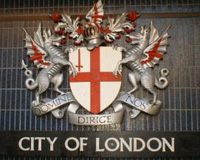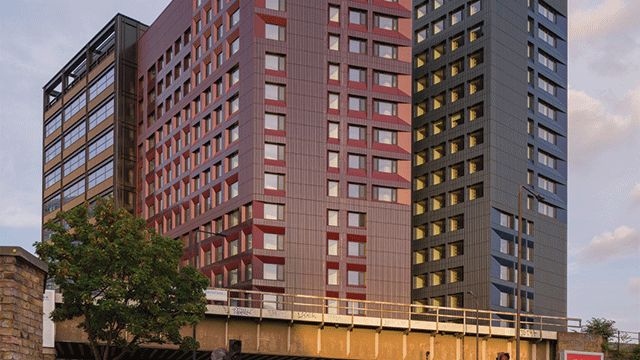A spate of high profile cross-border deals which brought large amounts of international capital into Europe last year made the point very clearly that, despite the financial turmoil over the future of the euro, the continent is still a major attraction for property investors around the world.
The large-ticket deals included US-based TIAA-CREF’s $540m purchase of the Pep Shopping Centre in Munich, Germany, South African Nathan Kirsch’s acquisition of the Tower 42 estate in the City of London for around $455m, and Canadian REIT Dundee International’s €745m purchase of a portfolio of German property mainly let to Deutsche Post.
They helped boost European property investment by 20% to $164.9bn over the year compared to a worldwide total of $410.6bn, according to Jones Lang LaSalle figures.
Around $12.3bn flowed from the US into Europe in 2011. While there has been a flight to quality among investors, “generally, most north American capital is looking for a premium to go across the Atlantic”, says MGPA’s European capital markets managing director, Christian Schulte Eistrup. “Most want excess returns when compared to their home market.”
US buyers, he explains, are particularly interested in value-add and bank-held distress opportunities.
Obviously, says Resolution Property’s Peter Todd, there is considerable variation within Europe, which he describes as being like “the proverbial curate’s egg – good in parts”.
Todd adds: “Basketing [the different markets], Europe looks pedestrian in terms of GDP, inflation and macro outlook, and there is not a compelling argument for investment. But our shareholders are, by and large, sophisticated investors looking at micro- rather than macro-specific opportunities,”
He points out that Portugal and Germany clearly have different risk profiles, a variance reflected in investment data.
Between them, the UK, Germany and France attracted 60% of Europe’s share of deals last year, according to JLL’s Global Capital Flows 2011 report. Russia, Poland and Sweden also saw notable increases in the scale of their transactions.
Last year, the UK was the largest market outside the eurozone, and Germany was the most successful within it. However, London emerged as the most active city, not just in Europe but in the world, according to JLL, beating New York, Paris, and Tokyo.
Asian buyers accounted for a significant proportion of acquisitions. “Of the £5.7bn of purchases by Asia Pacific investors in 2011, £5.1bn of that was spent in London,” says JLL’s Singapore-based David Green Morgan. “Paris, by contrast, saw £268m.”
Green Morgan explains that recent changes in regulations have allowed institutional money to go beyond national borders, as highlighted by the strong investment activity carried out by Korean and Malaysian funds.
Furthermore, because of the size of funds – particularly sovereign wealth funds – quite small percentage variations in portfolio allocation to real estate can have a major impact on property investment, says CBRE’s Jonathan Hull. “Compulsory superannuation and diversification is the key,” he adds.
Asia’s high-net-worth individuals are also making inroads into London property, and not just in the luxury residential market with which they are typically associated.
Aviva Tower in London’s EC3 was bought for £288m by palm oil billionaires Koon Hong Kuok and Martha Sitorus. This was a landmark transaction which, says Green Morgan, other super-wealthy Asian investors are keen to emulate.
Attractive pricing, he adds, is easier to achieve in cross-border deals, while many Asian players have been educated in Europe so they have acquired an affinity with the region. Currency is a also major driver, according to Cluttons’ head of fund management, Ross Owen. “Sterling is 25% lower than it was a few years ago,” he says.
Such drivers are still drawing large numbers of overseas buyers from outside Europe into the London residential market, too. Recently, however, they have been vying with Greek and Italian high-net-worth individuals seeking a safer haven for their capital.
Growing rental market
While historically, Asian interest in London residential property has been motivated by a desire to protect capital and own a London home, many far eastern investors are seeing opportunities in a growing rental market, as high prices force potential UK home buyers to rent until they can afford to buy.
“It’s an asset class that we haven’t seen since the 1960s and 1970s,” says law firm Taylor Wessing’s Keith Barnett. He adds that London residential property appeals to Singaporeans, Malaysians, Indians and Chinese, “many of whom have assembled huge family wealth and value an English education”.
However, the size of deals is important and it is the bigger lots that attract. “It is only worthwhile to do deals in large lot sizes,” says Green Morgan. “There is quite a lot of paperwork and, while investors may not do a deal for £40m, at £100m it is worth taking on all the advisers.”
Middle Eastern money has also found its way to London, with Qatar and Kuwait (through its UK property investment vehicle St Martins’ Property Corporation) proving particularly active.
According to Knight Frank’s Jeremy Waters, Qatari investors have also recently made acquisitions in Poland. Waters says that the need to find Sharia-compliant investments often precludes property with a primarily financial tenant base.
While London remains the focus of much overseas investment, Paris is attracting increasing interest, according to Green Morgan.
“It is the biggest office market in Europe and we are beginning to see greater activity there from Asians,” he says. “We think Paris is the next port of call.”











